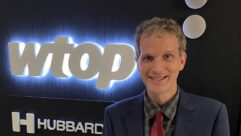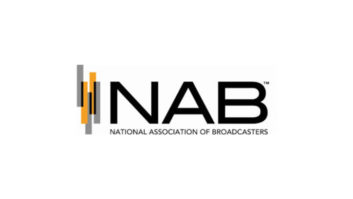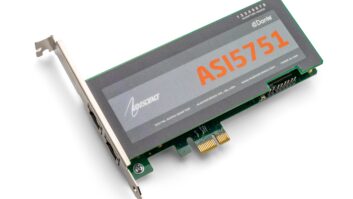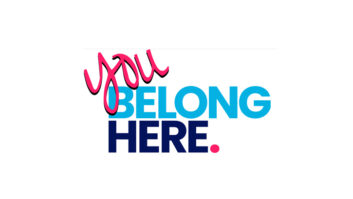
David Schwartz aligns an Ampex reel-to-reel recorder.

Donna Schwartz cleans an old record with the Keith Monks Record Cleaning Machine. Since before World War II, Cooperstown, N.Y., has been home to the National Baseball Hall of Fame and Museum. But unbeknownst to the thousands of fans who make the pilgrimage each year, there resides a hidden cache of more than 14,000 hours of audio recordings of baseball players, coaches and fans that stretches back in time to the roots of the sport.
While play-by-play radio broadcasts are the property of Major League Baseball, the stories of the people on and off the field belong to the Hall of Fame; and it is this collection of interviews, now being restored, that captures baseball’s colorful history in sound.
“BASEBALL IS AMERICA”
There are two challenges facing the curators: first, how to play these recordings, and second, how to make them accessible to this and future generations.
“The recordings are on reel-to-reels, cassettes, microcassettes and DATs,” said David Schwartz, co-owner with wife Donna, of DDS Enterprises-Information Alchemy in Newburgh, N.Y., the company handling the restoration.
“We have 78, 45 and 33 rpm records, aluminum discs and cylinder recordings. We have tapes with Dolby A, B, C, SR and dbx. We have to maintain an equipment museum to play this stuff.”
While David is the main technician, Donna is the research and documentation expert.
“We may not know what everything is at first because some of these tapes and records were poorly marked,” she said. “But it is very rare when we can’t determine the contents by listening and sleuthing.

One of several work areas at DDS Enterprises-Information Alchemy. “What we’re doing here may end up being the definitive historical record so we want to get all the details right. Some of the interviews we have restored include umpire Augie Donatelli, pitcher George Pipgras, utility man Tito Francona and Cool Papa Bell, who played for the Negro League from the 1920s to the 1950s,” she continued. “We also have ‘The Ballad of Don Larsen,’ a song by Red River Dave on 45 rpm. Another rarity we restored is the original 1939 induction ceremony for the Hall of Fame.
“We have this tremendous archive of unheard stories, these first-person accounts from the greats in baseball, and as we work there is this tremendous sense of discovery. Baseball is America, and we take our role as conservators seriously.”

An impressive collection of noise reduction systems populates these racks.MAKING IT PLAY
Restoring these archival interviews is not just a matter of dusting the tapes and discs off, racking them up and transferring the audio to a computer.
The Schwartzes use a proprietary six-step process, detailed at www.dds-enterprises.com, to bring these recordings back to life. Each item must be evaluated and processed individually.
“We started our company in1986, and our first restoration opportunity came when we bought out a recording studio in Poughkeepsie called Barclay-Crocker,” said David. “They had a bunch of Ampex 406 and 407 tapes, mostly classical music. We had to figure out how to play them without shedding oxide all over the place, so we taught ourselves to clean and dehydrate the tapes. There were also issues with gooey splices that all had to be redone using archival splicing tape that is acid-free. We use some of these same techniques on the baseball material.”
Because the NBHOF archives were recorded by many individuals over a period of decades, the reel-to-reel tape speeds range from 1-7/8 to 15 ips.
“There’s a lot you can do digitally and we have the software,” said David. “We could have just played them all back at a constant speed and let the computer make the adjustment, but it just doesn’t sound right unless you play these on the same type of machine and at the same speed at which they were recorded.”
DDS Enterprises is trying to digitize at the highest practical resolution rates.

High-speed tape duplicators and “thousands” of spare parts occupy a corner of DDS Enterprises-Information Alchemy. “Compressing audio into an MP3 is not the way to go,” said David. “We use 96 kHz, 24-bit sampling to preserve as much of the original audio as possible. And when we use noise reduction it’s very important that we not introduce artifacts. Hey, if the interview was done in a locker room we like to keep those background sounds because it’s part of being there for the listener.”
MAKING IT PAY
To some extent this work is a labor of love for the Schwartzes because of the time-consuming nature of restoration, but the couple still needs to earn a living.
“No one could possibly pay us for all our time,” he said. “But we do have a process. Once everything is in the pipeline, we can do multiple tasks at once. We can be dehydrating tapes, playing them back; we can be tracking and researching different tapes at the same time. There’s an economy of scale.”
DDS Enterprises has given the NBHOF a package price whereby the couple will deliver a certain number of pieces a month for a fixed sum. Because some of the recordings are five minutes in length and others are two hours, it seems to average out.
DOING THE JOB
Some of the equipment used by DDS Enterprises for restoration:
Tape Recorders: Ampex AG 440-c, Otari MTR-12, Studer A80, various Teac, Sony and Pioneer reel-to-reels; Tascam, Sony, and Panasonic DAT machines
Turntables: Technics SP-10, Technics SP-15, Thorens TD 145
Outboard Gear: dbx Type I, dbx Type II, Aphex, Dolby A, B, C, and SR noise reduction, assorted phono preamps with EQ curves for most record labels (78s), Mark of the Unicorn 896 A/D, D/A converters, McIntosh amplifiers, Micmix Dynafex noise reduction processor
Cart Machines:ITC 99B, ITC R/P
Monitor Speakers: JBL 4412A, Infinity Monitor II, ESS AMT 3, Tannoy NFM-8
Software:CEDAR and Waves restoration software, Adobe CS 5, customized proprietary software
Esoteric Stuff: Keith Monks record cleaning machine, Ampex RR 200/3200 duplicator system (from Barclay-Crocker), EMU Emulator III, KABA cassette duplication system, Weircliffe Model 8 bulk tape eraser, thousands of spare parts for every piece of equipment, test and calibration equipment to keep it all running properly
“We would like to complete all their audio,” he said. “And our client would like that too, but it comes down to budgeting for them. The NBHOF is soliciting private and corporate donations to complete this digitization process, but there’s actually more to it than that. They also have documents, films, photos, baseballs, gloves and other memorabilia. We are only involved with the audio materials.”
What happens to the original tapes and other media after they are restored?
“In addition to our ‘manipulated’ versions, we return the original materials to the Hall of Fame, hopefully in better condition than we found them,” said David Schwartz. “There may be some future technology that could do a better job than we did.”
Learn more about the restoration here: baseballhall.org/discover/preserving-tapes-from- hall-of-fame-collection.
Ken Deutsch says he was born in Chicago, where rooting for the Cubs gave him the strength to persevere while his dreams were being ground into the dirt.












